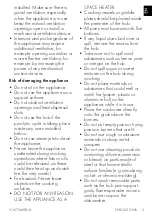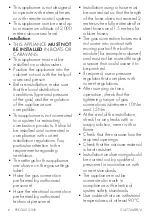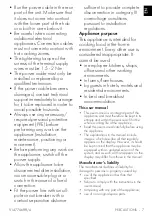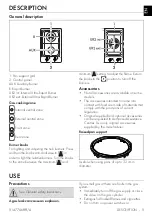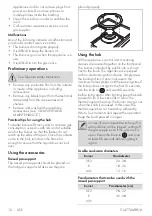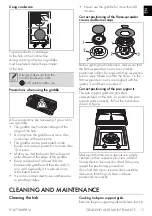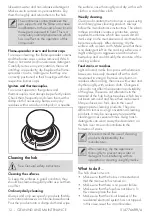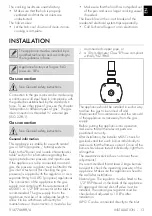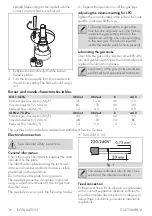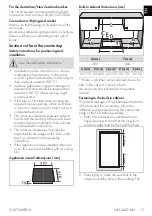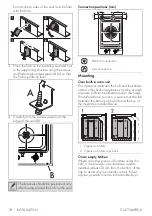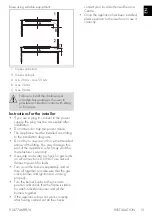
14 - INSTALLATION
91477A688/A
fitting. The pressure should be checked and, if
necessary, adjusted to 2.75 kPa. A test point
must be installed between the piping and the
appliance to check that the pressure is 2.75
kPa.
ULPG The gas pressure should be checked to
make sure that the working pressure of the
appliance is 2.75 kPa. The test point is the rapid
burner injector, as shown below.
1. Disconnect the power.
2. Turn on the auxiliary burner and set it to high
flame. Make sure that all the other burners
are turned off.
3. Set the pressure gauge to zero, attach the
hose in order to seal the rapid burner
injector; hold firmly in place and check the
gas pressure by pressing the corresponding
burner control knob and then turn it to the
high flame position.
4. If the pressure is 2.75 kPa, put back the
burner and carry out the final checks as
indicated in this instructions manual.
5. If the pressure is not 2.75 kPa, disconnect
the appliance and check/adjust/replace
the regulator(s) of the LPG cylinder in
accordance with AS/NZS 5601.
Connection to LPG
Use a pressure regulator and make the
connection on the gas cylinder following the
guidelines set out in the standards in force.
The supply pressure must comply with the values
indicated in the “Burner and nozzle
characteristics table”.
Room ventilation
The appliance should be installed in rooms that
have a permanent air supply in accordance
with the standards in force. The room where the
appliance is installed must have enough air flow
for the regular combustion of gas and the
necessary air change in the room itself. The air
vents, protected by grilles, must be the right size
to comply with current regulations and
positioned so that no part of them is obstructed,
not even partially.
The room must be kept adequately ventilated in
order to eliminate the heat and humidity
produced by cooking: In particular, after
prolonged use, you are recommended to open
a window or to increase the speed of any fans.
Extraction of the combustion products
The combustion products may be extracted by
means of hoods connected to a natural draught
chimney whose efficiency is certain or via forced
extraction. An efficient extraction system requires
precision planning by a specialist qualified in
this area and must comply with the positions and
clearances indicated by the applicable
standards.
When the job is complete, the installer must



